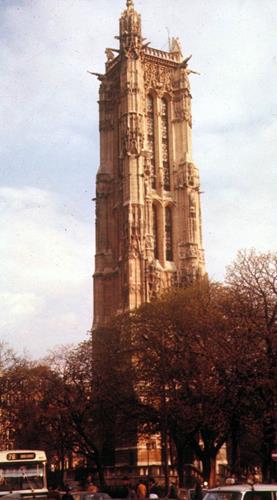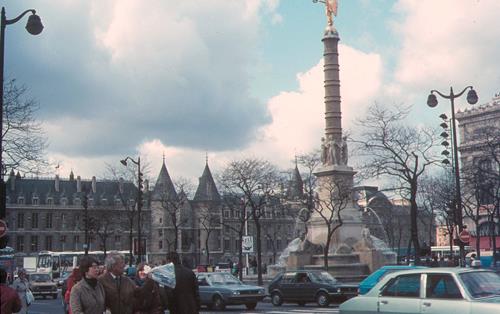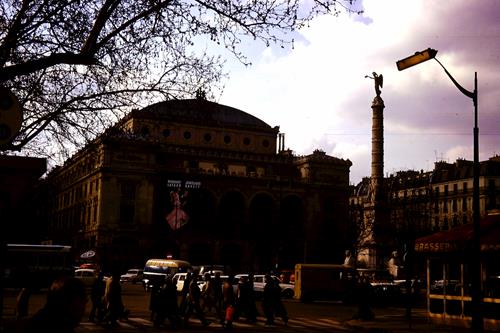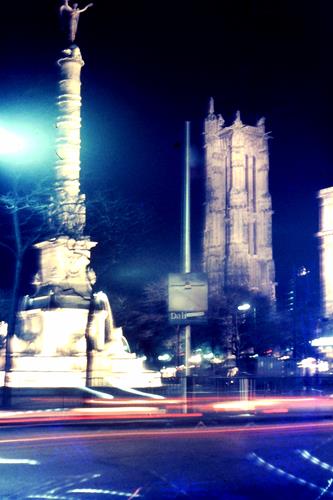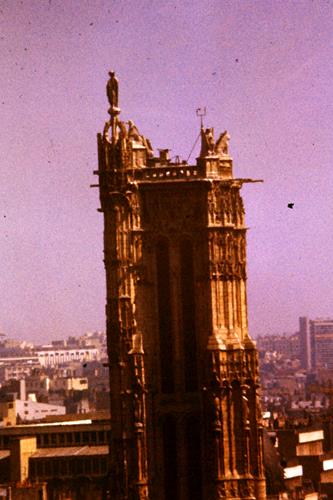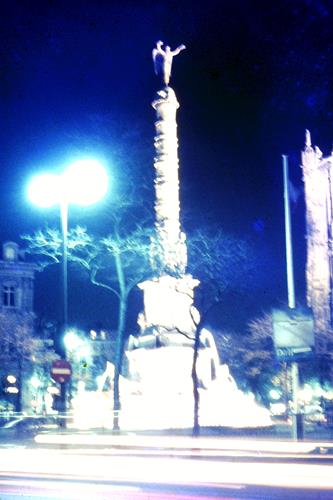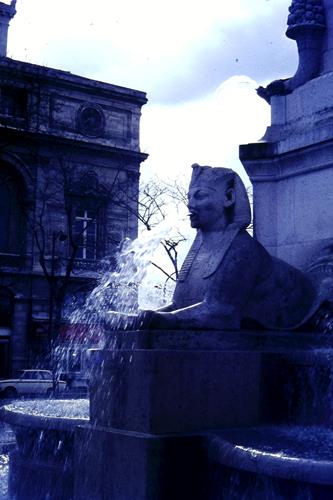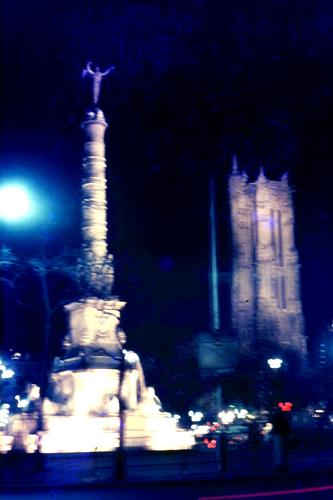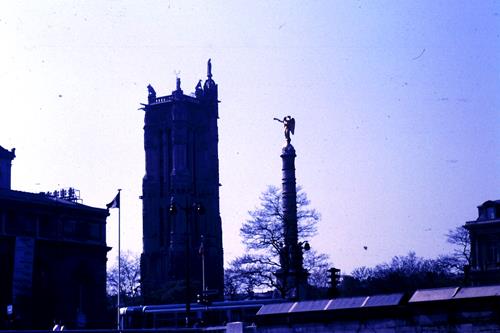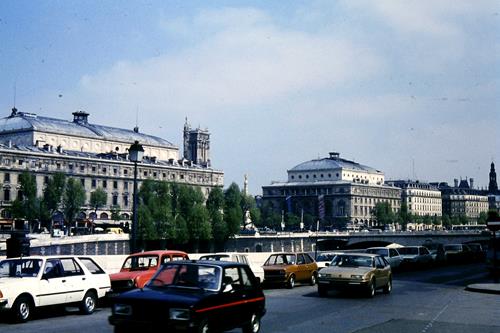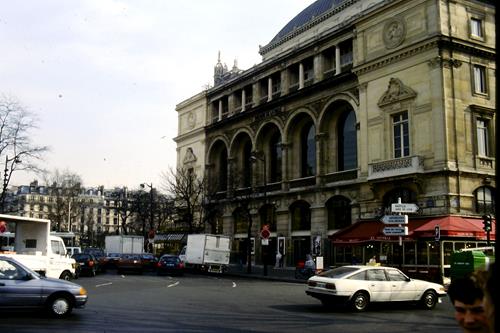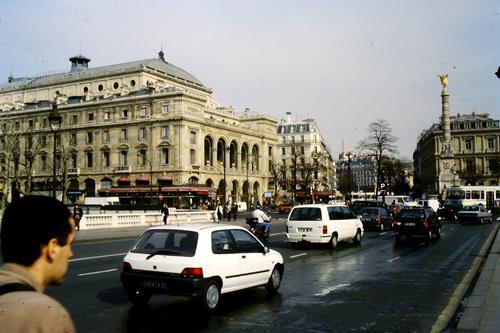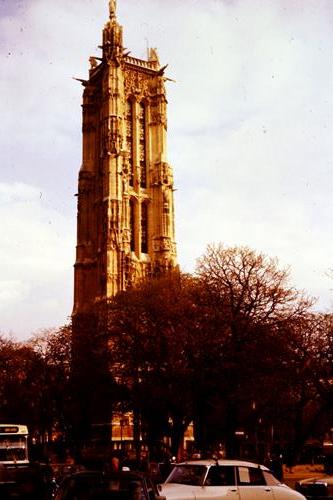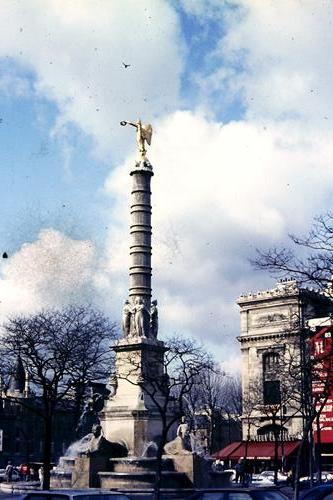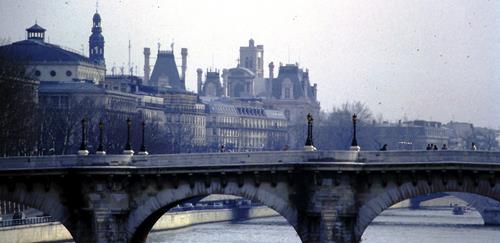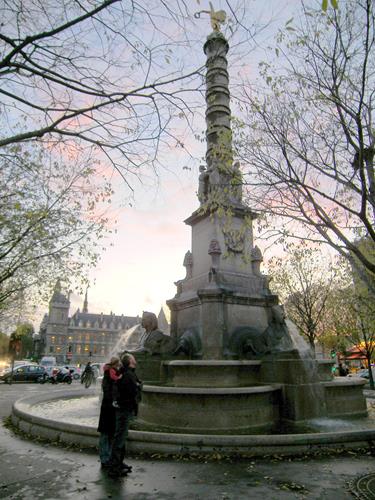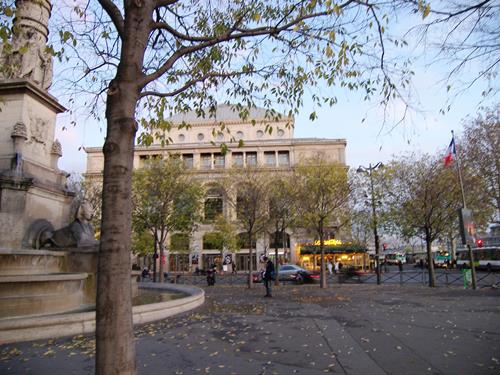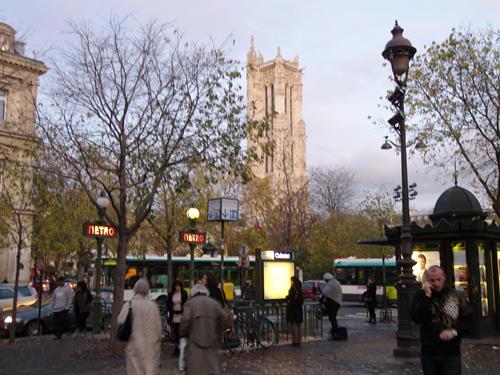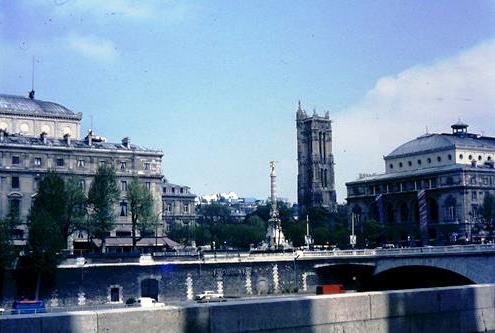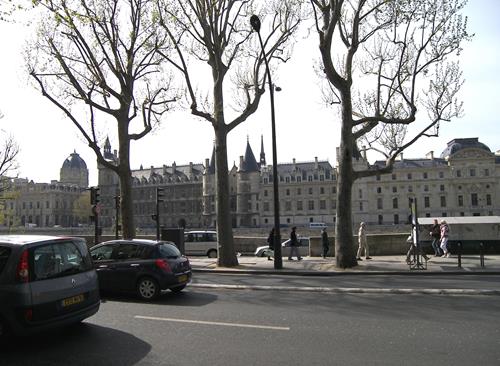
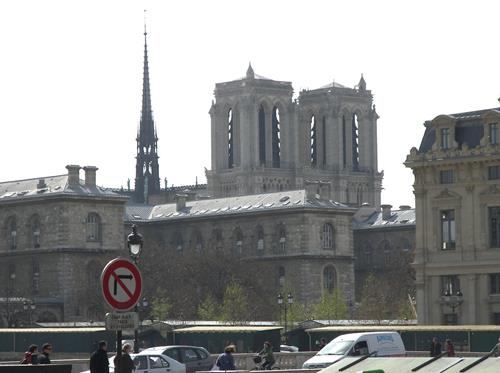
Place du Châtelet, Tour Saint-Jacques
| PLACE DU
CHATELET was once the site of a small castle famous for its
torture-chamber. It is now an impressive square, floodlit at night, with
an enormous theatre at each side, a fountain commemorating Napoleon’s
victories in Italy and Egypt, and a view clear across the Ile de la Cité
past the Conciergerie along the old Pilgrims’ road from the TOUR
SAINT-JACQUES. In the Middle Ages, instead of package tours, people went on pilgrimages. But they still mostly went to Spain, to the shrine of Santiago de Compostela. Sant’Iago = Saint-Jacques = Saint James. The pilgrims would start here, the first of a string of St.James’ churches. The old road still leads straight as an arrow across the island and away to the South. The pilgrims travelled in groups for fear of robbers, and at intervals of a day’s journey there were monasteries where they could stay the night. If you made it there and back, you were allowed to wear a badge showing a cockleshell, the medieval equivalent of an ‘I’ve been to Santiago’ T-shirt. Why is there a tower and no church? Well, during the Revolution the Town Council raised money by selling church property. The church of Saint-Jacques-la-Boucherie was bought by a manufacturer of lead shot, which you do by dripping molten lead down the inside of a tower. He demolished the church because it was in the way, and removed the various floors in the tower by the simple expedient of cutting the bells loose at the top. This must have caused one of the finest sound-effects in history. At the foot of the tower is a statue of Blaise Pascal, scientist and philosopher. The statue was placed here because it was known that Pascal did some experiments on atmospheric pressure on the tower of Saint-Jacques. It later turned out that he did them at an entirely different Saint-Jacques, but that’s life all over. |


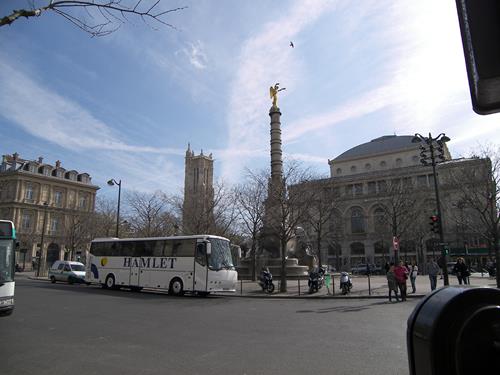

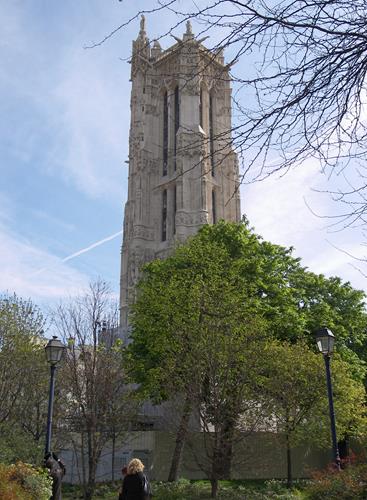
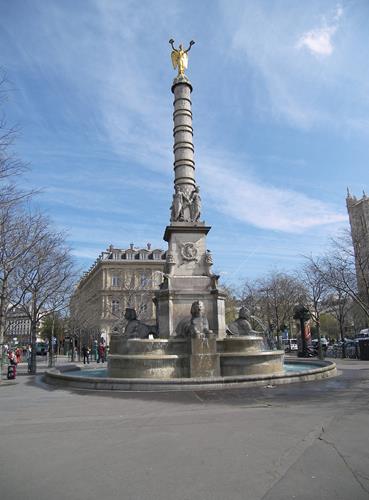
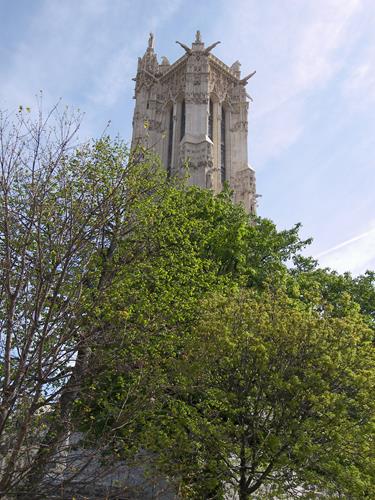

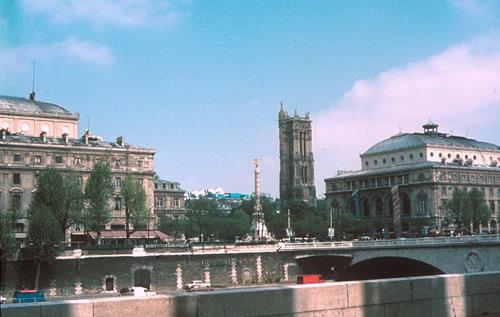
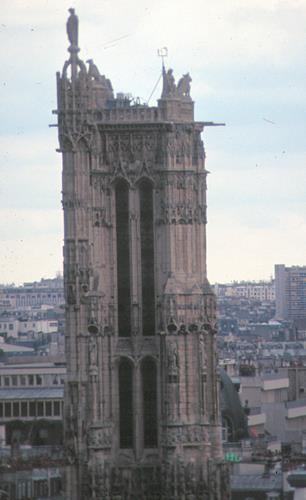
.jpg)
